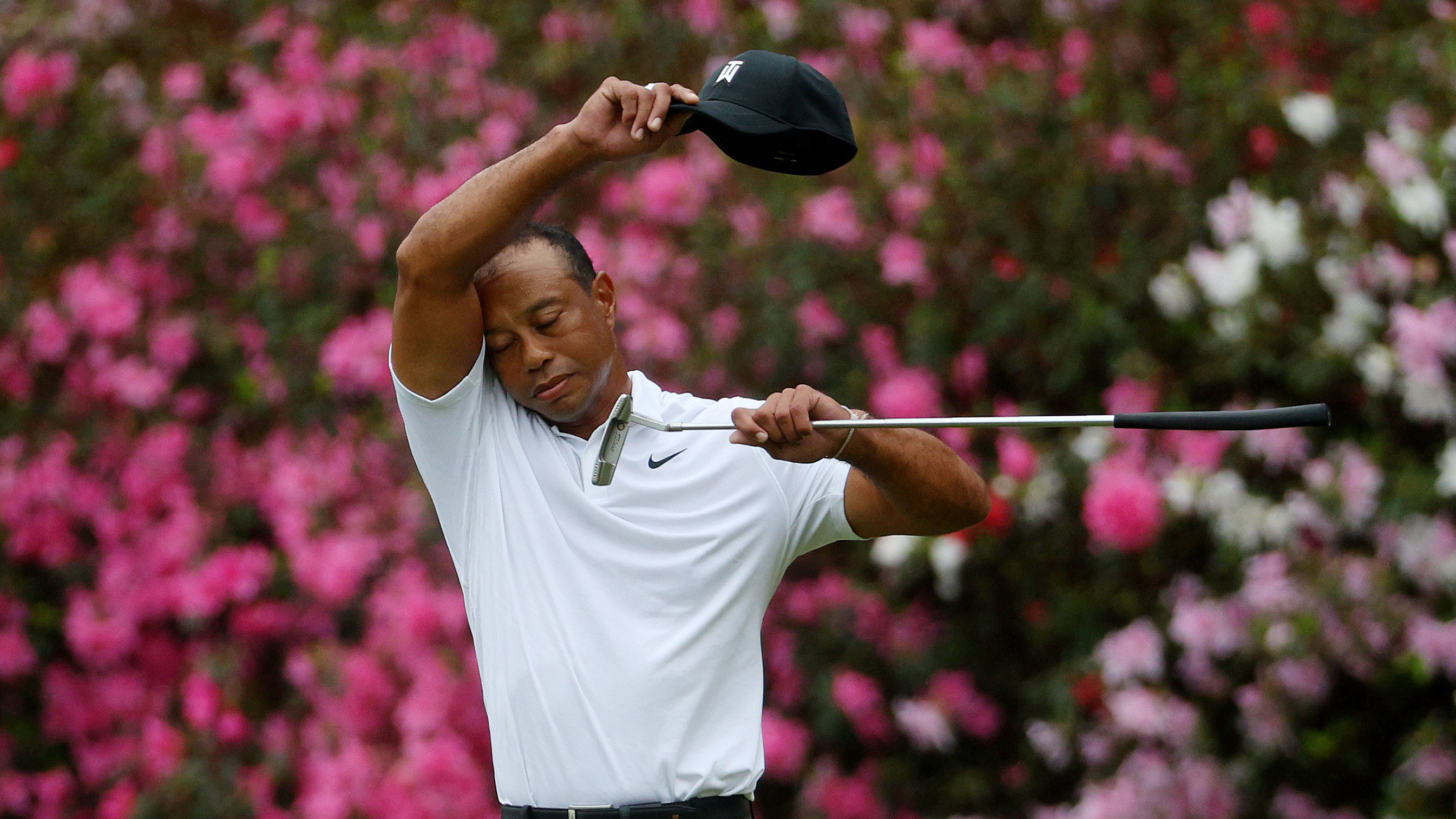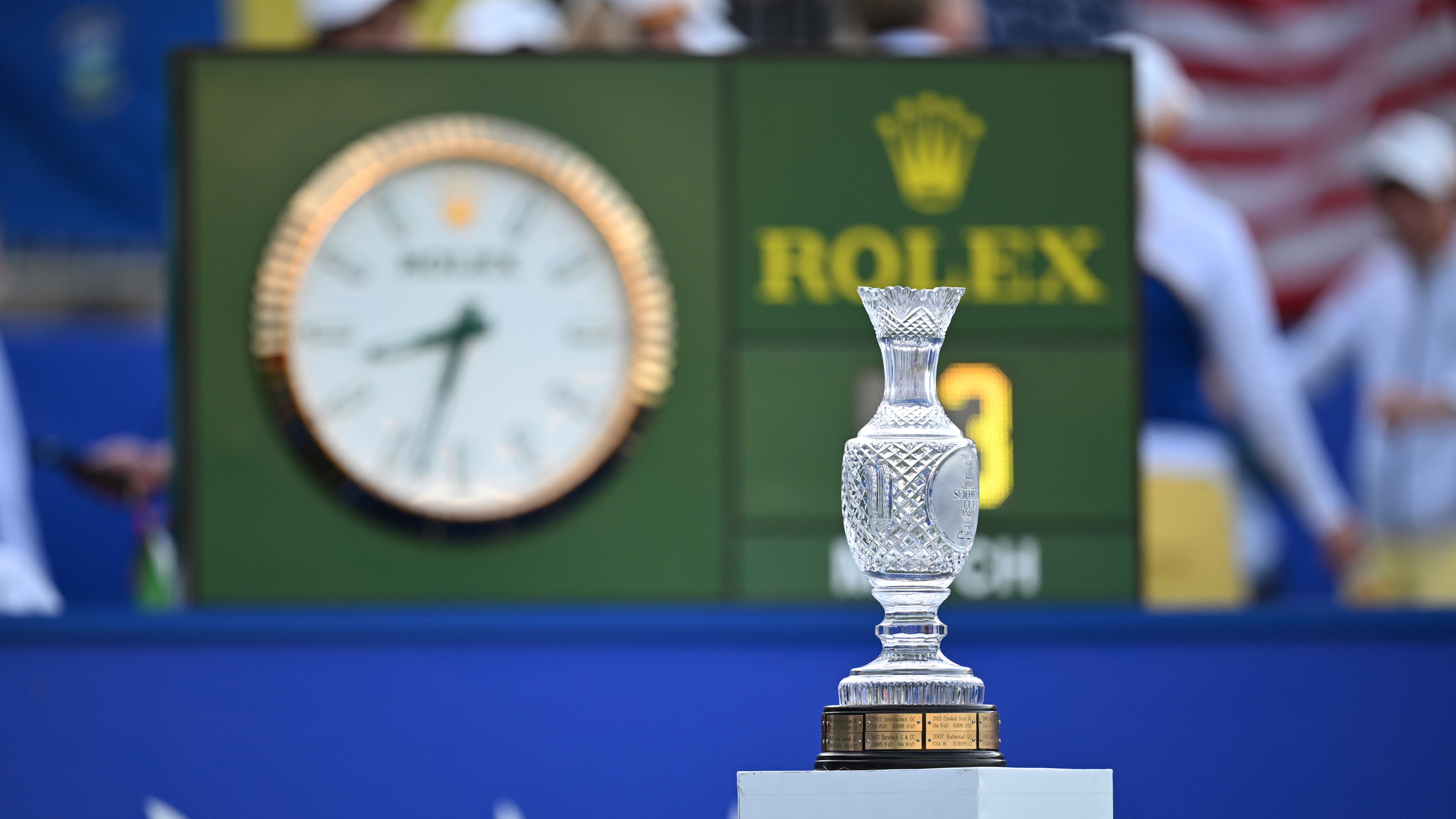Royal Troon Member Colin Montgomerie’s In-Depth Open Championship Hole-By-Hole Guide
Colin Montgomerie, a member at this year’s Open host venue, gives his take on how the pros will try to navigate the famous old links…


Fergus Bisset
“Obviously, it’s all wind dependent at The Open Championship. General playing requirements and individual holes will change dramatically in different conditions, as with any links course. I’m describing here the prevailing conditions which the pros are most likely to encounter at Royal Troon this July. And, this guide isn’t a look at the way an average amateur golfer would play the course, rather the way the modern professionals will look to negotiate the Old course here.
“Going out is vital at Royal Troon; a good front nine is key. If you haven’t gone out well, you almost certainly won’t find yourself coming back any better, is what I would say! The prevailing wind helps you on the front nine. It’s very much a course where it’s out and in, possibly the most so on The Open rota. If these top players haven’t gone out in under par, they’re in trouble.
“To give you an example from my experience, at the 2016 Open I started with a double-bogey and thought, ‘Oh no, here we go’. But I managed five birdies in the next eight holes to get out in three-under. That allowed me to play the round in level par. I was three-under going out, but bogeyed the holes you tend to drop shots on during the run for home… we’ll come onto those later.
“We saw an incredible battle between Mickelson and Stenson last time out, but I really don’t think we’ll see scoring like that again this time. If the weather is inclement at all, I can’t see it. And if you look at the rest of the field from 2016, apart from those two leaders, the next best was six-under and only 17 players broke par! I think that’s a bit more representative of the test.”
Front nine
1) Seal ~ par 4 ~ 366 yards
It might be tough to believe at just under 370 yards, but with the prevailing wind gusting down and out of the right, they are going for the green. If they aren’t, then someone else is and they’re losing out. For the top players, if they go in a greenside bunker, that’s not such a big deal. The modern game dictates that is how they will approach it. Take the fairway bunkers out of play by blasting over them and try to get it close. Some players might play it more strategically, but trying to get a fast start is key to success here.

The 1st hole at Royal Troon
2) Black Rock ~ par 4 ~ 389 yards
Get the Golf Monthly Newsletter
Subscribe to the Golf Monthly newsletter to stay up to date with all the latest tour news, equipment news, reviews, head-to-heads and buyer’s guides from our team of experienced experts.
The top players will get close to the 2nd green as well, if they go with driver. I can see many of them doing just that. They back their short games to such an extent that, even from the second row of cross bunkers just short of the green, they’ll fancy being able to get the ball onto the surface and get it close. If they can thread the needle and the ground is running, the very longest could be putting for eagle.
3) Gyaws ~ par 4 ~ 376 yards
There’s a burn bisecting the fairway, which the average golfer must play short of. But, these guys are not average! They will be able to power it over the burn from the tee with the wind helping. If they can choose the right line, they could be putting with their second shot. It isn’t the strongest championship start, I have to be honest. The first three are probably the easiest holes on the course, so that’s why a fast start is so important. Like any hole, there are potential pitfalls to negotiate, but most of the field will expect to be under par early on.
4) Dunure ~ par 5 ~ 599 yards
The chances keep coming, so long as the prevailing wind blows. The 4th is longer this year, but still a reachable par 5. Hit over the bunkers on the right side and most will have an iron into the green. If they can find shortish grass, it’s a realistic two-shot eagle chance. But bunkers and swales on the left could prove problematic from the tee. Getting a good drive away is crucial on this hole to afford the chance of reaching in two. The front of the green is well protected by two bunkers, so running the ball in requires accuracy.
5) Greenan ~ par 3 ~ 220 yards
The first par 3 at Royal Troon is a great hole. Over 200 yards, the pin will likely be put just over the bunker on the right side at least a couple of times through the tournament. That makes it very difficult to get the ball close as the breeze continues to (most likely) come from behind you. You probably accept a ball that finds the back of the putting surface and then are faced with a challenging two-putt. I think the 5th is a strong hole where par is highly acceptable.
6) Turnberry ~ par 5 ~ 623 yards
Here’s another chance for birdie on a downwind par 5. It may measure over 600 yards, but it will be reachable in two for most of the field should they get a drive off down the fairway. If it’s dry this July, the ball will run out considerably down here. They’ll find themselves with 250 into the green and will be hitting irons. I would say that five of the first six holes offer up chances when the wind blows as per normal. You must make your score as the challenge is going to ramp up.
7) Tel-el-Kebir ~ par 4 ~ 403 yards
It’s not a long par 4, but it’s definitely one where a bit more care is required from the tee to avoid a selection of well-placed bunkers, both left and right. However, again, the bolder players may choose to take an aggressive line over the right-side bunkers, almost aiming over the 8th green, to cut the corner and leave a wedge in. They may even threaten the front edge of the green, although there’s a little gully protecting it. Remember, this is all providing the prevailing wind blows.
8) Postage Stamp ~ par 3 ~ 123 yards
You walk up the hill to this tee and now you’re most likely back into the wind – the only hole on the front nine where this is the case. Suddenly, from the high-flowing swing you’ve been using to get the ball up in the air and ride the breeze, you need to keep one down. It’s a whole different feel. It’s only a 9-iron or wedge, but there’s so much danger. It’s a classic hole and, although only 123 yards, it’s a potential card-wrecker. The coffin bunker to the left side is aptly named because you’re dead in there! But missing it right is a real no-go, too, so the players will aim for the front-left portion as it’s the widest part of the green. If you play that hole in 12 shots for The Open, you’ll be doing well.
9) The Monk ~ par 4 ~ 440 yards
This is a good, strong hole. You drive down the left, but there are two well-placed bunkers there that you don’t want to find. It’s not really a birdie hole. Even though the green is bunker-free, it’s well protected by swales and run-offs. It’s one where you’re happy with a par. So, on the front nine, I would say there are six good birdie chances. Three-under is a standard score for the top players in normal conditions. You want to be ahead of the game for the start of the testing back nine.

The famous 'Postage Stamp' at Royal Troon
Back nine
10) Sandhills ~ par 4 ~ 450 yards
The 10th, 11th and 12th are as good a run of holes as you’ll find anywhere. Certainly, as tough a stretch. You can’t see the ball land over the top from the tee on the 10th. It’s a daunting and difficult drive. At 452 yards into the wind, they’ll be hitting a driver and then a 5-iron perhaps. It’s a really good two-shotter. Again, no bunkers at the green, but with a sharp drop to the right of the putting surface, only a really accurate approach will do. It’s the first of a number of holes on the back nine where you walk off very happy with par.
11) The Railway ~ par 4 ~ 498 yards
Another of those comes straight away. In fact, this is the toughest par 4 on the course and, I think, one of the toughest holes in championship golf. When the tee is back by the railway, all you see are gorse bushes. You can’t go right as you’ll be out of bounds and you can’t go left or you’ll be in the gorse. You must commit to the shot. But it’s only half the battle. Even if you find the fairway, the railway is only half a yard to the right of the green.
12) The Fox ~ par 4 ~ 451 yards
This one is no cake walk, either. The green is very small. It’s a feature at Troon that the greens are relatively small and it’s one of the course’s great defences. We’re now going across, so the wind is likely to be right to left. The targets are difficult to find, both from the tee and into the green. There are quite a number of tricky slopes to deal with on this underrated test.
13) Burmah ~ par 4 ~ 473 yards
Back into the prevailing wind again for another brutish par 4. It’s the only hole without a bunker at all and it really doesn’t need one. The tee seems to get further back every time the Championship is contested, and this hole really plays long, even for the power players of today. From the tee, everything cambers into the right-hand rough. It’s the start of a tough run for home, with each hole playing straight back into the wind. It’s time for them to dig deep and hold on tight to their score.

The 13th hole at Royal Troon
14) Alton ~ par 3 ~ 200 yards
A good par 3 that could be anything up to a 4-iron into the wind. Nothing better than a solid shot will do to find another fairly small putting surface. Bunkers short, both left and right, protect the entrance to the green and anything long will feed down and away off the shortest grass. For the best ball- strikers, it’s a chance. For those not swinging well, it’s a daunting shot.
15) Crosbie ~ par 4 ~ 502 yards
Together with 13, these are two very strong par 4s to contend with. It’s now more of a dogleg, with out-of-bounds across the road on the right side towards the practice ground. It’s two serious shots to reach in regulation. To give an idea, I couldn’t get home in two in 2016. I hit two drivers and couldn’t reach the green that rests in a little hollow. It’s a very difficult hole and one that won’t see many birdies.
16) Well ~ par 5 ~ 572 yards
Some slight respite with a par 5, or so one would think. It’s an opportunity, but the burn runs across the fairway. If it’s not too windy, some might elect to go over the top of it. But if the wind is blowing, you really can’t do that. There’s a chance here, though, and it’s one you’ll be really hoping to take advantage of. Again, the green is narrow and well protected by bunkers, so whether you’re trying to sneak one on in two or playing a short-iron in with your third, it needs to be accurate.
17) Rabbit ~ par 3 ~ 242 yards
Off the back tee, we used to say it was a 1-iron hole. It’s a small target and the ball falls off on either side. Left, it goes down to the forward teeing grounds on the 18th and right, there’s heavy, heavy bunkering. It’s a great hole really, but yet another on this challenging run for home where you’re absolutely delighted to walk off with a par.
18) Craigend ~ par 4 ~ 458 yards
There’s all sorts of trouble on the final hole. You walk back and back and back to reach the tee at Black Rock, the house in the middle of the course, and you think, ‘how far back are we going here?’ It’s some 150 yards from the 17th green. When you’re on that tee, all you see are the bunkers on the left and a new bunker on the right. And finding the short grass from the tee is by no means the only challenge. If they put the pin on the back of the green and you go a little too far, you’ll be out of bounds, like Norman was in the play-off in 1989.
Colin Montgomerie was speaking to Golf Monthly at Trump International Golf Links Aberdeen. He will host the PGA Seniors Championship there from July 31 to August 4.


Nick Bonfield joined Golf Monthly in 2012 after graduating from Exeter University and earning an NCTJ-accredited journalism diploma from News Associates in Wimbledon. He is responsible for managing production of the magazine, sub-editing, writing, commissioning and coordinating all features across print and online. Most of his online work is opinion-based and typically centres around the Majors and significant events in the global golfing calendar. Nick has been an avid golf fan since the age of ten and became obsessed with the professional game after watching Mike Weir and Shaun Micheel win The Masters and PGA Championship respectively in 2003. In his time with Golf Monthly, he's interviewed the likes of Rory McIlroy, Justin Rose, Jose Maria Olazabal, Henrik Stenson, Padraig Harrington, Lee Westwood and Billy Horschel and has ghost-written columns for Westwood, Wayne Riley, Matthew Southgate, Chris Wood and Eddie Pepperell. Nick is a 12-handicap golfer and his favourite courses include Old Head, Sunningdale New, Penha Longha, Valderrama and Bearwood Lakes. If you have a feature pitch for Nick, please email nick.bonfield@futurenet.com with 'Pitch' in the subject line. Nick is currently playing: Driver: TaylorMade M1 Fairway wood: TaylorMade RBZ Stage 2 Hybrid: Ping Crossover Irons (4-9): Nike Vapor Speed Wedges: Cleveland CBX Full Face, 56˚, Titleist Vokey SM4, 60˚ Putter: testing in progress! Ball: TaylorMade TP5x
- Fergus BissetContributing Editor
-
 If You Need A New Driver, Here Are 5 Excellent Models Under $300
If You Need A New Driver, Here Are 5 Excellent Models Under $300Want a new driver but the high prices are putting you off? Here are five great value options from the PGA TOUR Superstore sale!
By Sam Tremlett
-
 Two-Time Champion Billy Horschel Forced To Withdraw From Zurich Classic Of New Orleans
Two-Time Champion Billy Horschel Forced To Withdraw From Zurich Classic Of New OrleansTwo-time winner Billy Horschel was forced to pull out of the Zurich Classic of New Orleans due to what he called a "lower body injury"
By Paul Higham
-
 ‘I Want To Play Golf, But…’ - The Women Redefining Golf On Their Own Terms
‘I Want To Play Golf, But…’ - The Women Redefining Golf On Their Own TermsTo coincide with #AccelerateAction, the theme for International Women's Day, we highlight the way female golfers are driving change
By Alison Root
-
 'He Nearly Fresh Aired It. It Came Off The Heel And Almost Hit His Foot' – Legendary Caddie Recalls The Worst Shots He's Ever Seen Tiger Woods Hit
'He Nearly Fresh Aired It. It Came Off The Heel And Almost Hit His Foot' – Legendary Caddie Recalls The Worst Shots He's Ever Seen Tiger Woods HitThe 19th Uncut podcast co-host and legendary caddie Billy Foster looks back on two shots that Tiger Woods will want to forget..
By Mark Townsend
-
 What Lies Beneath? The 8 Items You’re Likely To Find Buried In Golfers’ Bags
What Lies Beneath? The 8 Items You’re Likely To Find Buried In Golfers’ BagsGolf bags are home to balls, clubs and valuables, but there’s typically much more lurking in the depths that hasn’t seen the light of day in months or even years…
By Nick Bonfield
-
 'I Didn't Think I'd Walk Again... Now I Can't Think Of My Life Without Golf'
'I Didn't Think I'd Walk Again... Now I Can't Think Of My Life Without Golf'Double amputee Kushal Limbu recounts the day in Afghanistan that changed his life and tells how golf has been an integral part of his rehabilitation...
By Jeremy Ellwood
-
 What Is A Stimpmeter And How Does It Work?
What Is A Stimpmeter And How Does It Work?If we told you it measures speed, you'd probably be able to guess exactly what this simple device was
By Roderick Easdale
-
 I Missed My Golf Club Membership So Badly (For Reasons That Might Surprise You) But I'm So Glad I've Rejoined...
I Missed My Golf Club Membership So Badly (For Reasons That Might Surprise You) But I'm So Glad I've Rejoined...Our Women's Editor Alison Root has rejoined a golf club and believes it is one of the best decisions she has ever made
By Alison Root
-
 'I Became The Middleman, Players Would Sometimes Come To Me First' - Solheim Cup Player Anna Nordqvist On Her Dual Role
'I Became The Middleman, Players Would Sometimes Come To Me First' - Solheim Cup Player Anna Nordqvist On Her Dual RoleWe sat down with Anna Nordqvist as she prepares for her 9th Solheim Cup appearance and a second time as playing-assistant captain
By Alison Root
-
 Another Exciting Spectacle Of Golf Is Set To Unfold... Our In-Depth Preview Of The Solheim Cup
Another Exciting Spectacle Of Golf Is Set To Unfold... Our In-Depth Preview Of The Solheim CupWhat can we expect from the 19th edition of the Solheim Cup?
By Alison Root